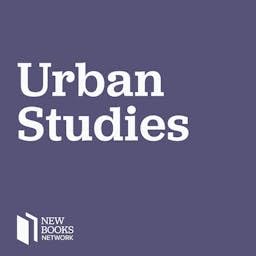This episode explores what China’s subnational climate experiments tell us about the possibilities and limits of climate leadership in an era of intensified geopolitics. We discuss how China’s domestic governance dynamics matter for international climate cooperation and competition, especially as Chinese actors become central in the global low-carbon transition. Thus, we turn our attention away from headline-grabbing climate summits and national pledges to examine the less visible, but often decisive, actors shaping China’s low-carbon transition. Implementing a Low-Carbon Future: Climate Leadership in Chinese Cities (Oxford University Press, 2025), a new book by Weila Gong, opens the black box of subnational climate governance in China and asks: who actually makes low-carbon policy work on the ground? Our guest, Weila Gong, is a visiting scholar at UC Davis’s Center for Environmental Policy and Behavior and a nonresident scholar at UC San Diego’s 21st Century China Center. She has held fellowships at Georgetown, Harvard, and UC Berkeley School of Law, and brings more than a decade of experience studying the politics and policies of low-carbon energy transitions in China. Her work is timely. Despite being the world’s largest carbon emitter, China has pledged to peak carbon emissions before 2030 and achieve carbon neutrality by 2060, commitments that place it at the center of global climate cooperation and competition. We’re recording this episode in November 2025 as COP30 unfolds in Brazil, and at a moment when China is stepping into a more assertive role as a climate-technology power. Chinese officials and firms increasingly frame the country’s dominance in renewables, electric vehicles, and clean-energy supply chains as central to the global transition. Yet, as Gong’s book shows, climate leadership is not only forged through clean technologies or in international negotiating rooms and national policy announcements. It is also built, often unevenly, across hundreds of cities and counties within China. At the heart of this variation, Gong identifies a pivotal group of actors: mid-level local bureaucrats. These officials function as “bridge leaders,” translating national directives into locally workable policies, mediating between political leadership changes, and sustaining experimentation over time. In doing so, they challenge top-down views of China’s climate governance and reveal how bottom-up dynamics shape both domestic outcomes and China’s role as a global climate leader. Learn more about your ad choices. Visit megaphone.fm/adchoices
Show More
Show Less
 38 mins
38 mins 44 mins
44 mins 58 mins
58 mins Dec 26 202550 mins
Dec 26 202550 mins Dec 24 202543 mins
Dec 24 202543 mins 50 mins
50 mins Dec 22 202543 mins
Dec 22 202543 mins 29 mins
29 mins
